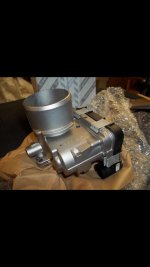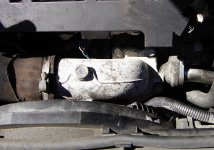CDK
Member
The engine starts immediately but refuses to exceed 1200 rpm for 1-2 minutes, then suddenly the engine sound changes from muted to normal and it responds like it should. This happens regardless of engine temperature, once the sound changes the exhaust produces an alarming amount of smoke with an acrid smell.
The phenomenon began immediately after the fuel filter cracked open and poured more than half the tank's content over the engine. I posted about that a few days ago.
The warning light came on with an error code for "excessive EGR". I deleted the code, the light is off, but the problem remains. I also tapped on the EGR valve with a small hammer, at the same time applied compressed air to the vacuum hose and plugged it: no improvement!
Removing the valve seems a lousy job because of the location of it, the rusty bolts and nuts and the fact that it is connected to the coolant circuit. And frankly I'm not sure the valve is really the culprit.
I read somewhere there is also a "throttle housing", something I do not understand because diesel engines normally do not have such a device.
Can anyone shed some light on this?
The phenomenon began immediately after the fuel filter cracked open and poured more than half the tank's content over the engine. I posted about that a few days ago.
The warning light came on with an error code for "excessive EGR". I deleted the code, the light is off, but the problem remains. I also tapped on the EGR valve with a small hammer, at the same time applied compressed air to the vacuum hose and plugged it: no improvement!
Removing the valve seems a lousy job because of the location of it, the rusty bolts and nuts and the fact that it is connected to the coolant circuit. And frankly I'm not sure the valve is really the culprit.
I read somewhere there is also a "throttle housing", something I do not understand because diesel engines normally do not have such a device.
Can anyone shed some light on this?




